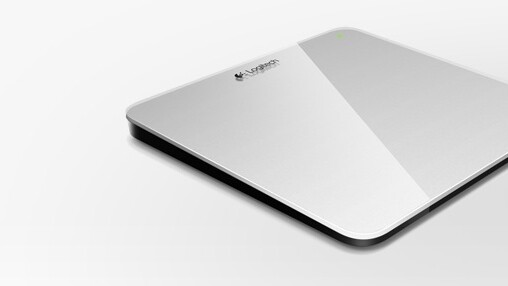
Please see the update at the end of this review.
A couple of days ago Logitech announced the impending release of its Trackpad for Mac, a $69 alternative to Apple’s own Magic Trackpad offering. Logitech was quick to ship one our way, and it only took a few minutes of use in order to see the positives and perhaps fatal flaw of its device.
I should preface this review by saying that I’ve been a long-time, vocal fan of Logitech peripherals. Of course, I’m also a big fan of Apple’s own products, but I’m always open to the idea that there’s something out there that works better than what Apple brings to the table.
The box for the Logitech Trackpad is simple, containing the trackpad itself, a coiled micro-USB cable and an owner’s manual. The manual is short, since there’s really nothing out of the ordinary about how the device works. Pair it via Bluetooth, make sure there’s a charge and you’re ready to go. It’s that rechargeable aspect that intrigued me about the Trackpad, since Apple’s device runs on two AA-sized batteries. I’ve found myself wanting for charged batteries as my Magic Trackpad died, due largely to poor planning on my part.
So I paired the device, checked the charge and started using it. When scrolling and pointing, it feels almost identical to Apple’s, though the “click” of a button push is notable easier to accomplish on the Logitech. This could be good or bad for you, depending on how heavy-handed you tend to be. It sits notable lower, in the far portion, due in part to not having the height of AA-sized batteries. Though it’s not uncomfortable, I prefer the angle of the Magic Trackpad.
But then I tried to scroll a page in Chrome, and I immediately found the flaw. It was jerky. But not terribly jerky, like scrolling on an underpowered computer. The stalling was minute, but enough to be jarring to the experience. I tried three different browsers, as well as a number of apps, and I couldn’t ever get the smooth response that I’m used to seeing with my MacBook Pro’s standard trackpad, or with the Magic Trackpad.
The other factor that gets a big thumbs down from me is the lack of intertial scrolling. If you use a Mac, you’re familiar with how this works. If you don’t use a Mac, I’m not sure why you’re reading this, but I’ll explain. When you scroll on a Mac, and let off from the trackpad, your page continues to scroll slightly, slowing itself to a stop over a few milliseconds. It feels very natural once you get used to it, and having that suddenly disappear is very disrupting.
Update: I hate having to admit when I’m wrong, but I will. And I was wrong about the Logitech Trackpad. The problem at hand is that I thought I knew too much. Logitech makes a software called Setpoint that it uses for most of its Windows peripherals. The Mac version of this is called Control Center, and I already had it installed. So when I loaded up the Trackpad and found it to be jerky, I chalked that up to a flawed product.
But the flaw was actually my own. There’s a specific software for this trackpad and I failed to notice that fact. After loading the software, the device works every bit as well as Apple’s own Magic Trackpad.
So the choice comes down to this — For an equal price, do you want to own Apple’s device, or a rechargeable version from Logitech? If you’ve been in the market for a Magic Trackpad, the convenience of a rechargeable version should be on your mind. As for me, I’m just glad to see that Logitech is holding up to it reputable standard.
Get the TNW newsletter
Get the most important tech news in your inbox each week.